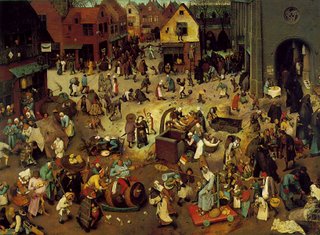1. In your own words explain mimesis.
2. How does Sophocles represent or imitate human behavior in the play Oedipus the King?
3. How does John Barth do it in his play Giles the Goat Boy.
Extract 2 Origins of the tragic and comic views of human behavior.
In Extract 1 Joseph Meeker reveals two views of human behavior, one tragic the other comic. Group 1 will explain this in detail during the seminar.For now answer the following questions once you have read your extract.
- According to Meeker what is the origin of the tragic view?
- What are the assumptions made about 'man'?
- Explain why Meeker thinks comedy is universal.
- Why does Suzanne Langer say comedy is "amoral".
- What makes comedy pessimistic and tragerdy optimistic?
- Paraphrase the last paragraph.
Extract 3 - Comus and Lysistrata
- Who is Comus?
- What is his role in Nature and in human affairs?
- What has he got to do with comedy?
- The ancient comedy of Lysistrata illustrates the role of Comus. Read the description and paraphrase it for the class showing how the demi-god works to restore equilibrium.
- How does comedy regard tragedy?
Extract 4 - Who is imitating who?
- "Art imitates life." Is this true? What did Oscar Wilde think?
- How did Don Quixote become a knight errant.
- Explain the author thinks that modern people can't really be convincingly tragic anymore. To help you, in line 21 you could replace the word 'Moderns' with 'People living in the modern scientific age'.
- What is the prerequisite for tragedy.
- What is the additional belief the goes along with this prerequisite?
- What could make a tragic heroe's quest absurd?
- Why does tragedy parody itself?
Class discussion:
Do you agree with Meeker? Explain your answer.
